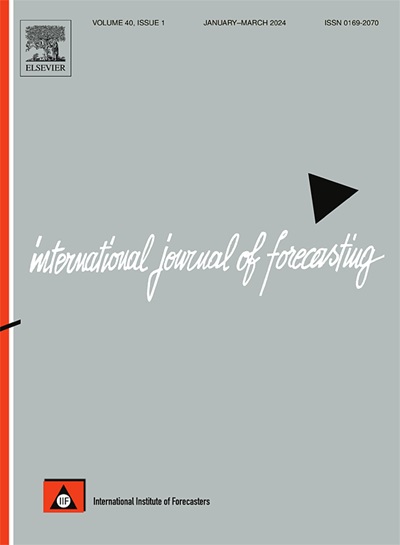随着预测的极值,信心的下降
IF 7.1
2区 经济学
Q1 ECONOMICS
引用次数: 0
摘要
一大批首席财务官对标准普尔500指数(s&p 500)年回报率的预测和四项实验表明,当预测偏离零(无论是正方向还是负方向)时,预测信心就会下降。这种降低的信心反映在更长的预测间隔、更大的感知波动估计和对预测准确性的更弱的信念上。De Bondt(1993)的预测对冲随着预测的极值而加剧,但当区间对称时,置信度的下降是持续的。通过对首席财务官施加累积前景理论偏好,排列测试表明,信心的降低延迟了对乐观预期的反应,并缓解了校准错误,尽管乐观的首席财务官仍将VIX折算50%以上。因此,本文揭示了一种自我纠正机制,可以部分(但远非完全)抵消过度自信的危害。本文章由计算机程序翻译,如有差异,请以英文原文为准。
The decrease in confidence with forecast extremity
A large panel of chief financial officers’ forecasts of the S&P 500 annual returns and four experiments suggest that forecast confidence decreases as the forecasts diverge from zero, in the positive or negative direction. This decreased confidence is reflected in longer forecast intervals, larger perceived volatility estimates, and weaker belief in the accuracy of the predictions. De Bondt’s (1993) forecast hedging intensifies with the extremity of the forecasts, but the decrease in confidence is sustained when the intervals are symmetrized. Imposing cumulative prospect theory preferences on the CFOs, permutation tests show that the decreased confidence delays the response to optimistic expectations and alleviates miscalibration, although the optimistic CFOs still discount the VIX by more than 50%. The paper thus reveals a self-corrective mechanism that partially, but far from fully, offsets the overconfidence hazards.
求助全文
通过发布文献求助,成功后即可免费获取论文全文。
去求助
来源期刊

International Journal of Forecasting
Multiple-
CiteScore
17.10
自引率
11.40%
发文量
189
审稿时长
77 days
期刊介绍:
The International Journal of Forecasting is a leading journal in its field that publishes high quality refereed papers. It aims to bridge the gap between theory and practice, making forecasting useful and relevant for decision and policy makers. The journal places strong emphasis on empirical studies, evaluation activities, implementation research, and improving the practice of forecasting. It welcomes various points of view and encourages debate to find solutions to field-related problems. The journal is the official publication of the International Institute of Forecasters (IIF) and is indexed in Sociological Abstracts, Journal of Economic Literature, Statistical Theory and Method Abstracts, INSPEC, Current Contents, UMI Data Courier, RePEc, Academic Journal Guide, CIS, IAOR, and Social Sciences Citation Index.
 求助内容:
求助内容: 应助结果提醒方式:
应助结果提醒方式:


